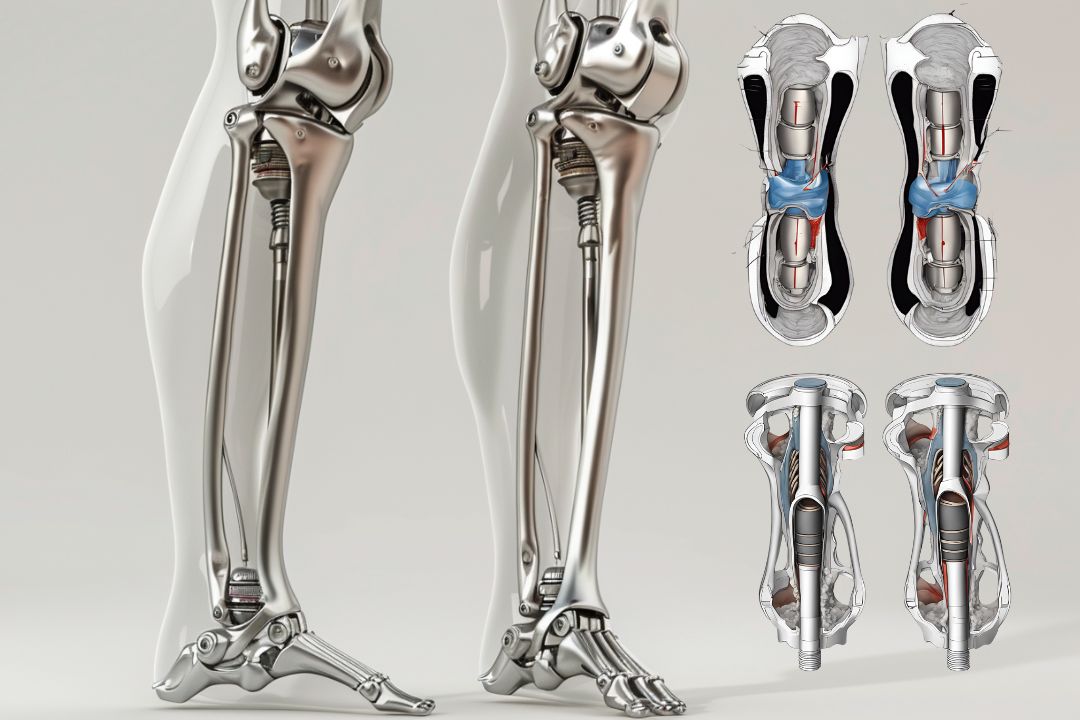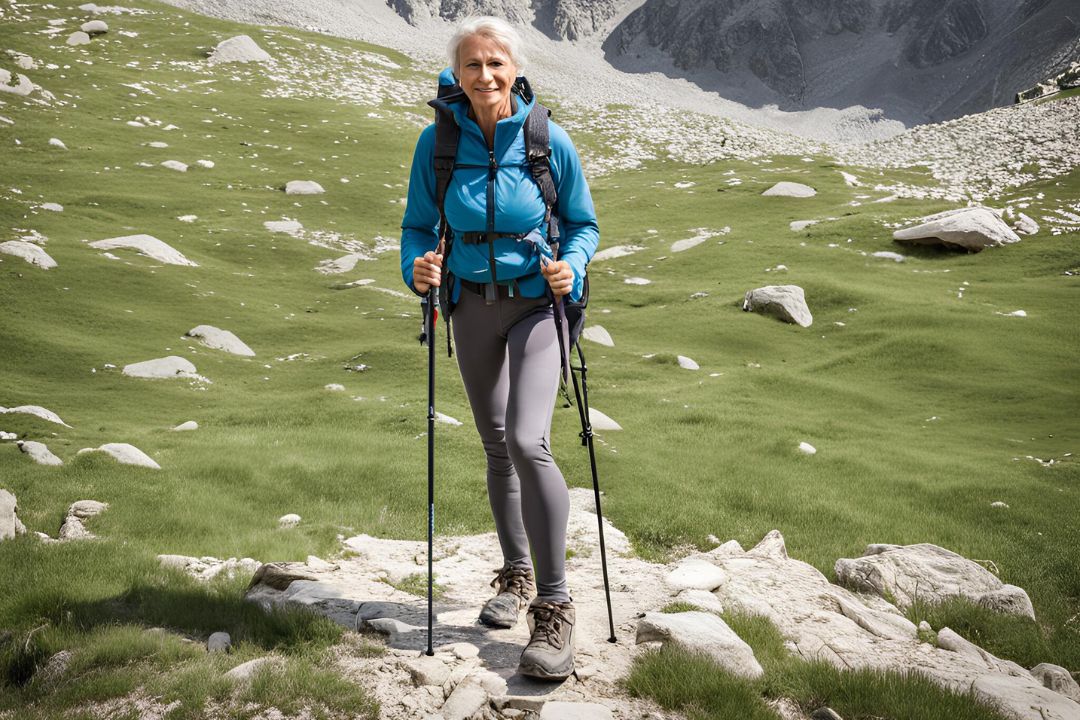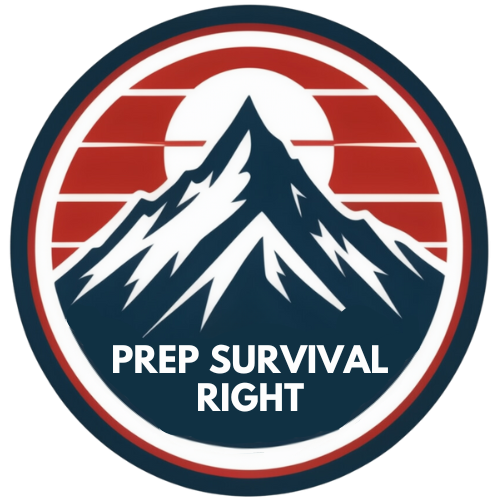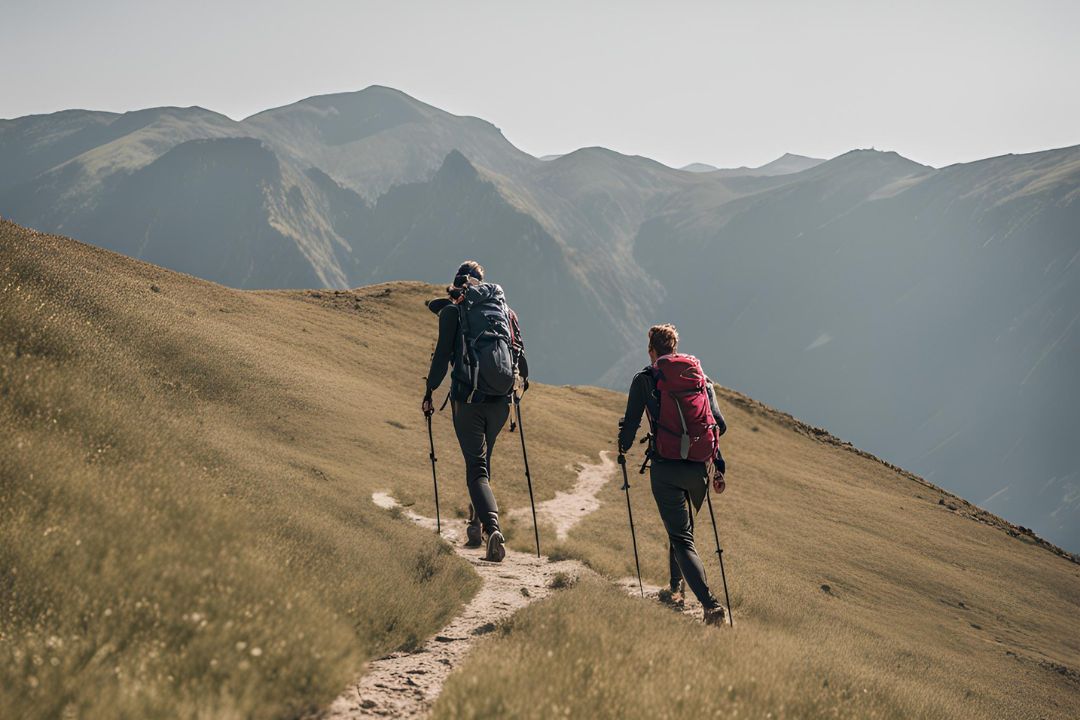10 Benefits of Using Trekking Poles
If you’ve ever wondered whether trekking poles are worth using, you’re in the right place. Many people think of trekking poles as tools for those with knee issues, but there’s much more to them. From reducing stress on your joints to aiding in balance, these poles offer numerous benefits.
Beyond just helping with balance and impact, trekking poles can be used in emergencies, improve your hiking pace, and even assist in building shelter. They can also function as a handy tool for various situations on the trail. With so many advantages, trekking poles can certainly enhance your hiking experience in ways you might not have considered.
Key Takeaways |
|---|
Trekking poles reduce joint stress and improve balance. |
They can be used in emergencies and improve circulation. |
Poles help maintain pace, clear obstacles, and improve posture. |
Shock Absorber Benefits
 Using trekking poles can act as shock absorbers for your joints. When hiking, especially with a heavy backpack over uneven surfaces, the impact on your joints can be quite high. Trekking poles distribute some of the impact to your arms and shoulders, giving your joints a break. This can be especially helpful during longer hikes, reducing the stress on your knees and ankles over time.
Using trekking poles can act as shock absorbers for your joints. When hiking, especially with a heavy backpack over uneven surfaces, the impact on your joints can be quite high. Trekking poles distribute some of the impact to your arms and shoulders, giving your joints a break. This can be especially helpful during longer hikes, reducing the stress on your knees and ankles over time.
By integrating your arms into the hiking motion through trekking poles, you get additional ground contact points. This means your body is not bearing all the weight in your legs alone. Over a day, the difference might be subtle, but over years, you will notice the reduced strain and thank yourself for it.
Enhancing Balance
When crossing rivers, navigating loose rocks, or walking on slippery gravel, trekking poles offer great support in maintaining balance. They provide extra points of contact with the ground, making it easier to stay steady. This extra stability can be crucial, especially in challenging terrains where a little extra help can prevent slips and falls.
Emergency Aid Usage
In critical situations on the trail, trekking poles can be a lifesaver. If you get bitten by a snake or sprain your ankle, your pole can act as a splint or a crutch. Unlike sticks, which you might not always find nearby, your hiking pole is right with you. This can provide immediate support and allow you to stabilize an injury until you get proper medical help.
Beyond that, trekking poles can help signal for help. You can attach bright-colored fabric to them or wave them to get attention from a distance. In snowy conditions, they can be used to probe the ground to avoid hidden dangers or to gauge the depth of snow.
Using trekking poles for emergency aid ensures you are always prepared without needing extra gear. This kind of versatility not only makes your hike safer but also lighter and more convenient.
Improving Circulation
When you’re hiking, you might sometimes notice your hands getting puffy. This happens because fluid pools in your hands. Using trekking poles can help with this problem. These poles keep your arms moving and the blood flowing. They help improve the circulation in your body.
It’s also helpful to take breaks and swing your arms around your head. This simple action can reduce the swelling in your hands. Keeping that movement and blood flow is important when you’re out on the trail. This way, you can enjoy your hike without the discomfort of puffy hands.
Maintaining Pace
When you’re on a long trail, keeping a steady pace can be challenging, especially on flat terrain or when there’s not much to see. Trekking poles can help you maintain your rhythm, making it easier to keep moving.
Using poles can give you a consistent stride. This is not just good for your speed but can also make the hike feel less tiring. By engaging your arms and shoulders, the effort is distributed more evenly across your body.
Trekking Tip: If you find it hard to keep going, try focusing on the regular motion of your poles. This can serve as a mental boost, helping you stay on track and motivated.
Pacing Benefits of Trekking Poles:
- Consistent Rhythm: Helps maintain a steady walking pace.
- Even Workload: Distributes effort between upper and lower body.
- Boost Motivation: The regular motion can keep you mentally engaged.
These simple tools can make a significant difference in how you tackle long or monotonous parts of the hike.
Building a Shelter
When you’re out in the wild, a shelter is crucial. Your trekking poles can come to the rescue here. Some tents are made to use these poles instead of traditional tent poles.
This makes your gear lighter and saves you from carrying extra weight. Multi-purpose gear like this can be a game changer on long hikes.
Additionally, setting up a shelter with trekking poles is simple:
- Choose a Flat Spot: Find a good level surface.
- Stake Down the Corners: Secure the tent corners with stakes.
- Insert the Poles: Use your trekking poles in place of tent poles to support the structure.
- Tighten the Lines: Adjust the lines to make sure everything is taut and secure.
Using your trekking poles this way not only lightens your load but also makes setup and teardown faster and easier. Plus, it shows how versatile your hiking gear can be with a bit of creative thinking.
Selfie Stick Features
A trekking pole can double as a selfie stick. There is an accessory called a Stick Pick, which fits onto the end of your trekking pole. This accessory has a thread so you can attach your camera. Some trekking poles also have a built-in thread at the top of the handle, providing an extra angle for your selfies. This feature transforms your trekking pole into a useful tool for capturing moments while hiking.
Another Option Besides a Machete
A trekking pole can serve as a helpful tool for pushing aside overgrown bushes. When you’re on a trail that’s a bit wild, you might need to move some plants out of your way. Using your trekking pole allows you to do this without much effort.
If you wear shorts while hiking, this method can also help protect your legs from scratches. Instead of hacking through with a machete, you just glide the pole forward, gently moving the plants aside as you walk. It’s a simple and effective way to keep your path clear without damaging the vegetation too much.
Posture Improvement
 Using trekking poles can help you maintain better posture while hiking. When you’re climbing steep hills without poles, you might push off your thighs with your hands, leading you to lean forward. This posture can put extra pressure on your back, especially if you’re carrying a heavy pack.
Using trekking poles can help you maintain better posture while hiking. When you’re climbing steep hills without poles, you might push off your thighs with your hands, leading you to lean forward. This posture can put extra pressure on your back, especially if you’re carrying a heavy pack.
Trekking poles help you stay upright by encouraging you to keep your chest up. This reduces strain on your back and can make your hike more comfortable. By keeping you in a more natural position, trekking poles can prevent back pain and improve your overall hiking experience.
Removing Spider Webs
While hiking, you’ll sometimes come across large spider webs that span the trail. Using trekking poles can help you manage these obstacles. Instead of tearing through the web, try gently catching one end with your pole and moving it aside. This way, you avoid destroying the web completely and let the spider continue its work. This can be especially useful if the web is big enough that you can’t simply walk around it.
Keeping Snakes Away
When hiking, you might have to deal with the presence of snakes, especially on narrow trails. Using trekking poles can help here. By tapping the ground in front of you with your poles, you can create vibrations. These vibrations can alert snakes to your presence, encouraging them to slither away before you get close.
Think of your trekking poles as an extra layer of safety. If the trail is tight and snakes are a concern, the poles make it easier to stay aware of your surroundings. Plus, having a pole in your hand means you’re less likely to be caught off guard. This simple tactic can make your hike more comfortable and safe.

